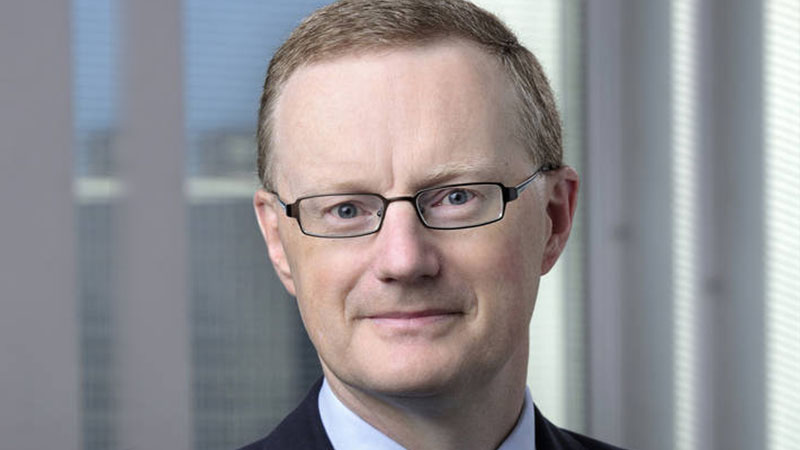The Reserve Bank of Australia maintained the cash rate at its record low of 0.1 per cent on Tuesday (6 July) and it declared that it would not be changing its projections for a rate rise in 2024.
The statement collided with estimates from CBA and ANZ, among other banks, that the RBA could change rates as soon as 2023 or even 2022.
But in an address discussing the central bank’s monetary decision, RBA governor Philip Lowe referred back to its targets for raising the rate, commenting it was “unlikely”.
The RBA is aiming for inflation to hit 2-3 per cent, compared with 2020’s 0.87 per cent, and for the yield target to be achieved, which would see the April 2024 bond hit 10 bps.
“For inflation to be sustainably within the 2-3 per cent range, I think we’re going to have wage growth above 3 [per cent],” Dr Lowe said.
“The last time wage growth was above 3 per cent in Australia was a decade ago. Over a decade, it went from above 3 to 1.5. I don’t think it’s particularly likely that it shoots back up to above 3 per cent over the next 18 months.”
He added that the change to wage growth will need at least a couple of years, and that inflation will not sustainably be in the 2-3 per cent range without it.
Further, it won’t be enough for inflation to tiptoe over the 2 per cent band – the RBA wants its target to be maintained for a number of quarters and to have the assurance that it will last.
“So, if you think we’re going to raise interest rates in 2023, you’ve got to have a much more positive forecast of wages growth than we currently have, which would require the dynamics in the labour market to be very different to those that have been at work over the past decade,” Dr Lowe said.
“Those dynamics have been pretty powerful. It’s been a big increase in labour supply. I spoke last week about the mindset of businesses, about their perceptions that they have difficulty raising prices, and therefore they want to keep control of their costs.
“So, all those dynamics would have to change fundamentally, to get wages growth up above 3 per cent in the next 18 months, and therefore inflation higher than it currently is.”
Meanwhile, other central banks, such as the Reserve Bank of New Zealand and the Canadian central bank have hinted at rate rises in 2023.
Dr Lowe commented that while countries such as Canada have an underlying inflation rate that is close to its central bank’s target, Australia is further away.
“In Australia, we’ve been below the target for too many years and the prospect of reaching the target in the short term is not particularly high,” he noted.
“It’s partly linked to the issue of wages… Wage growth in Australia had slowed by more than it had in most other countries before the pandemic. And we had a particularly large response in wages during the pandemic as well.
“So, wage growth had fallen by more, and it stepped down again during the pandemic. So, even though the real economy in Australia has been much better than in almost any other western country, the outcomes for inflation and wages have not been better.”
The RBA board also decided to continue purchasing government bonds after completing the current bond purchase in early September.
The purchases will be at the rate of $4 billion a week until at least mid-November.
“In terms of the bond purchases… we will first want to see clear evidence that a stronger economy is leading to a pickup in inflation pressures. And to date, we haven’t seen that,” Dr Lowe said.
“The economy’s (surprise) massively on the upside. But the wage and inflation outcomes have pretty much in line with our expectations. So, we have not yet seen evidence that the stronger economy is translating into stronger prices and wage pressures.”
All eyes on household debt
As previously indicated, the RBA is watching the mortgage market. Dr Lowe revealed there had been an “extensive discussion” about it in the most recent Council of Financial Regulators meeting.
The watchdogs are monitoring banks’ lending standards and levels of household debt, but Dr Lowe reported he is yet to see any evidence of any issues.
“Credit growth has picked up. It’s running at 6 or 7 per cent, it’s going to pick up further,” he said.
“What neither APRA or the Reserve Bank want to see is credit growing too quickly relative to people’s incomes. We’ve – in Australia – got quite high levels of household debt already.
“In my view, it’s not in the country’s long-term interest to have debt increasing at a much, much higher rate than people’s income.”
At the moment, household debt growth is higher than income, but “not massively higher”, the governor said.
If debt does fire up, however, the RBA will consider launching policy tools that it has been exploring. The central bank has mulled over increasing the interest serviceability buffer for banks, and imposing restrictions on portfolio loan-to-value and debt-to-income ratios.
“I don’t see a need to have to move on any of those areas at the moment. Ultimately, it’s a matter of for APRA,” Dr Lowe said.
“But we’re watching very carefully for the trends in household debt.”
[Related: Property prices grew by 13.5% in FY21: CoreLogic]
 ;
;
